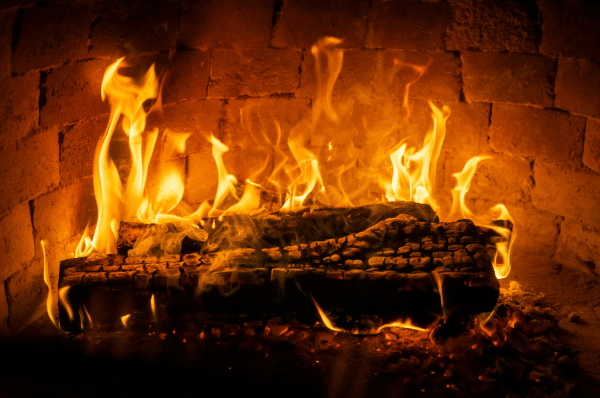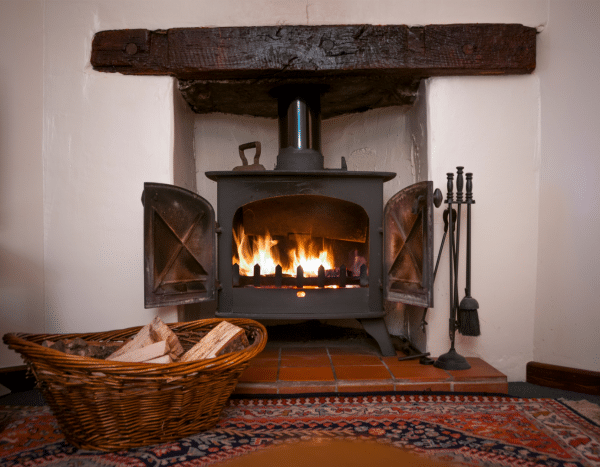Choosing the Right Firewood for Your Fireplace
Importance of Selecting the Right Firewood
Selecting the right firewood for your fireplace is crucial for a warm, cosy, and efficient heating experience. The type of firewood you use directly impacts the efficiency of your wood burner, the safety of your home, and the environmental footprint of your heating practices.
Benefits of Appropriate Firewood
Using appropriate firewood, such as kiln-dried hardwood logs, maximises heat output and contributes to a safer burning process. Properly chosen firewood burns hotter and cleaner, ensuring you get the most heat from each log while reducing the buildup of creosote in your chimney, which can be a fire hazard. Wood burner dry logs are ideal for stoves as they produce less particulate matter, making them better for both the environment and your health.
Enhancing Fire Starting with Kindling Wood Sticks
Incorporating kindling wood sticks is essential for starting fires quickly and effectively, providing a stable base for larger logs to catch fire. When choosing firewood, it’s essential to consider factors like moisture content, wood type, and the specific needs of your heating appliance to achieve optimal results.

Understanding Firewood Types
Hardwoods vs Softwoods
When it comes to choosing firewood, understanding the differences between hardwoods and softwoods is essential. These two categories of wood differ significantly in terms of burn time, heat output, and usage.
Hardwoods:
- Burn Time: Hardwoods burn longer than softwoods due to their higher density. This makes them ideal for prolonged heating and maintaining a consistent fire.
- Heat Output: Hardwoods produce more heat compared to softwoods, making them more efficient for heating purposes.
- Usage: Hardwoods are generally preferred for fireplaces and wood burners where sustained heat is necessary. Common examples include:
- Oak or Olive Wood: Known for its long burn time and high heat output. They also burn with a lovely aroma.
- Ash & Beech: Burns steadily and produces a consistent heat with minimal smoke.
- Birch: Burns efficiently in wood burning stoves and is easy to ignite and get the temperature up quickly..
Softwoods:
- Burn Time: Softwoods burn more quickly and are less dense than hardwoods, leading to a shorter burn time.
- Heat Output: While they ignite easily, softwoods produce less heat and burn faster.
- Usage: Softwoods are often used for kindling to start fires due to their quick ignition. However well dried softwoods can burn very efficiently in modern wood burning stoves and with the lowest emissions too. Common examples include:
- Pine: Lights easily and burns quickly, making it ideal for kindling.
- Spruce: Another softwood that ignites easily but burns fast, suitable for starting fires
- Larch: Great for modern wood burning stoves for efficiency with a low emission output.
Kiln Dried vs Seasoned Wood
Choosing between kiln-dried and seasoned wood is another critical decision that impacts the efficiency and convenience of your fireplace.
Kiln-Dried Wood:
- Benefits:
- Lower Moisture Content: Kiln drying reduces the moisture content of wood to below 20%, ensuring it burns more efficiently and cleanly
- Higher Efficiency: Because of the low moisture content, kiln-dried logs produce more heat and less smoke.
- Immediate Usability: These logs are ready to use immediately after purchase, eliminating the need for further drying.
- Additional Advantages: Kiln-dried logs are less likely to harbour pests and mould, contributing to a cleaner and safer burning experience
Seasoned Wood:
- Benefits:
- Cost-Effective: Seasoned wood is typically less expensive than kiln-dried wood.
- Drying Process: Seasoned wood is air-dried naturally over a period of months to years, which reduces its moisture content to about 20-25%.
- Considerations:
- Longer Drying Process: It takes longer to prepare, often requiring 6 months to 2 years to reach optimal dryness.
- Storage Needs: Proper storage is essential to keep the wood dry and prevent it from absorbing moisture again.
- Moisture Content: Seasoned wood should ideally have a moisture content below 20% for efficient burning, but it may not always reach this level without proper care
By understanding these key differences and benefits, you can make an informed decision on the best type of firewood for your fireplace, ensuring efficient and safe burning throughout the season.

Storage and Maintenance Tips
Proper Firewood Storage
Importance of Keeping Firewood Dry and Well-Ventilated
Storing firewood properly is essential to maintain its quality and ensure efficient burning. Firewood needs to be kept dry to prevent mould and rot, which can significantly reduce its heat output and make it difficult to ignite. Good ventilation is crucial to allow air to circulate around the wood, helping it to continue drying out and stay in optimal condition.
Tips for Effective Storage
- Use Pallets: Elevate your firewood off the ground using pallets or a firewood rack to prevent it from absorbing moisture from the ground.
- Cover but Allow Ventilation: Cover the top of the woodpile to protect it from rain and snow while leaving the sides open to allow air circulation. This helps the wood to stay dry and continue drying if it still has some moisture content
- Proximity to House: Store your firewood close enough to the house for convenience, but not directly against the exterior walls to avoid attracting pests or causing moisture problems. A well-ventilated shed or a covered area with good airflow is ideal
Maintaining Firewood Quality
Regularly Check and Rotate Stock
To ensure your firewood remains in good condition, regularly check and rotate your stock. This involves using the older wood first and adding new wood to the back or bottom of the pile. This rotation helps to prevent wood from sitting too long and becoming overly dry or unusable.
How to Identify Well-Seasoned or Properly Kiln-Dried Logs
- Visual Checks: Well-seasoned logs typically have cracks at the ends and a darker, greyish colour compared to freshly cut wood. Kiln-dried logs may have a lighter appearance but should also show some signs of drying, such as end cracks
- Auditory Checks: Knock two logs together. A clear, sharp sound indicates they are dry, whereas a dull thud suggests they still contain moisture
Environmental and Safety Considerations
Sustainable Firewood Sourcing
When purchasing firewood, it’s important to consider its environmental impact. Sourcing firewood from sustainable sources helps to protect forests and reduce your carbon footprint.
- Certifications to Look For: Look for firewood that comes from managed woodlands ) and that are woodsure Ready to Burn certified. These certifications indicate that the wood has been harvested responsibly,sustainably & is ready to use.
Safety Tips
Ensuring proper chimney maintenance is crucial for the safe operation of your fireplace. Regularly cleaning your chimney prevents the buildup of creosote, a byproduct of burning wood that can cause chimney fires if not managed properly.
- Avoid Using Wet or Improperly Seasoned Wood: Wet wood produces more smoke and creosote, increasing the risk of chimney fires. Always use dry, seasoned wood or kiln-dried logs to ensure a clean and efficient burn
- Regular Chimney Maintenance: Have your chimney inspected and cleaned at least once a year by a professional to remove any creosote buildup and ensure it is in good working order
Conclusion
Selecting the right firewood for your fireplace is essential for achieving efficient, safe, and environmentally friendly heating. By understanding the differences between hardwoods and softwoods, as well as the benefits of kiln-dried versus seasoned wood, you can make informed choices that enhance your heating experience. Proper storage and maintenance of your firewood ensure that it remains in optimal condition, providing maximum heat output and safety. Additionally, sourcing firewood from sustainable sources helps protect the environment.
Choosing the appropriate firewood, such as kiln-dried hardwood logs for higher efficiency or wood burner dry logs for better heat output with low emissions when burnt in a modern wood burning stove, can make a significant difference in your home’s warmth,safety and the local environment. Incorporating kindling wood sticks for easier fire-starting and maintaining your stock with regular checks further ensures a reliable and efficient burning process.
Find the Perfect Firewood for Your Needs
For high-quality firewood options, visit Kent Charcoal Firewood. Explore our wide range of products and services designed to meet your specific heating needs. Choose the right firewood to enjoy a cosy and warm winter season, and ensure efficient, safe, and environmentally friendly burning.